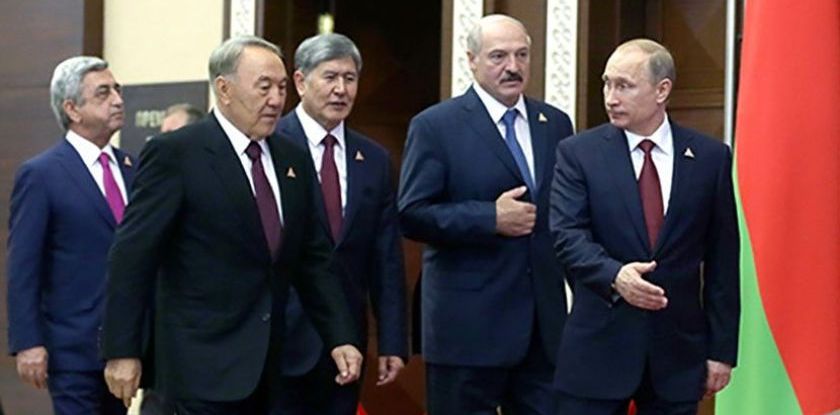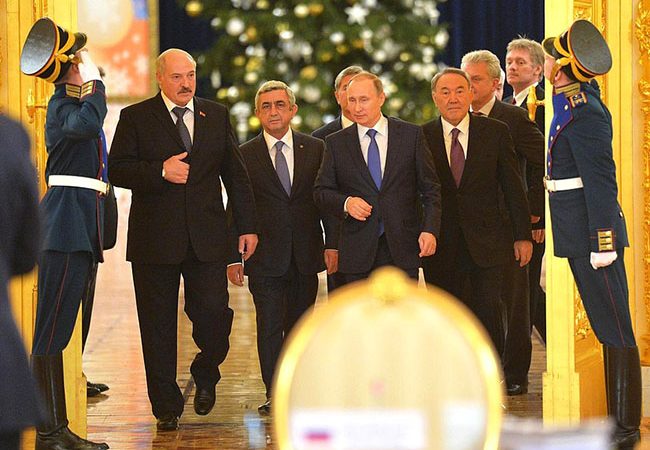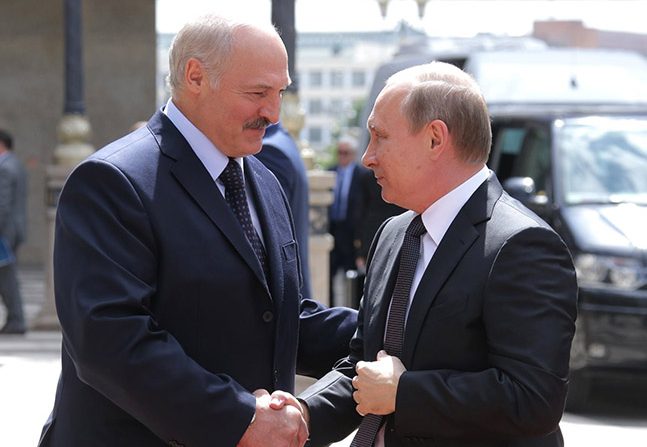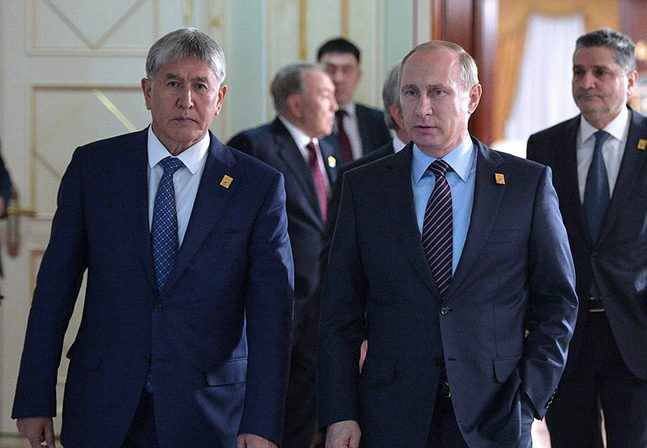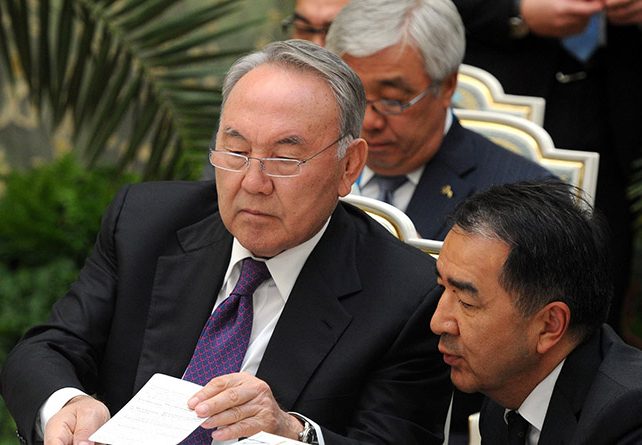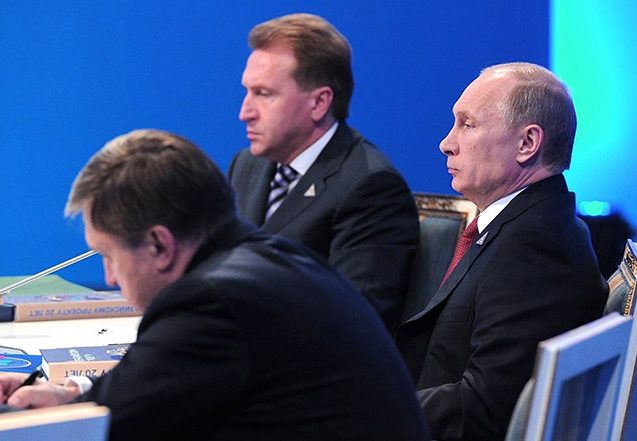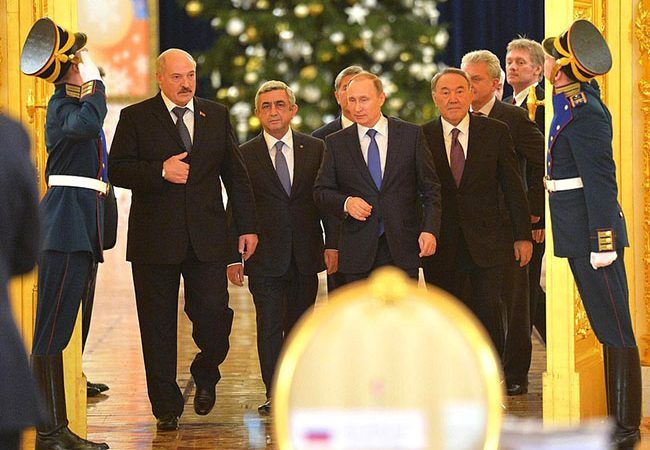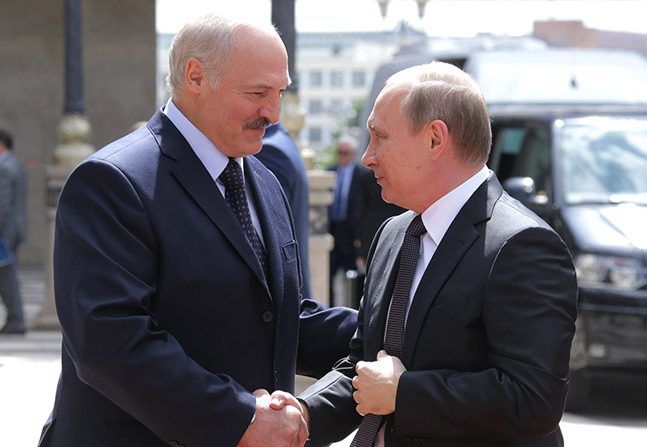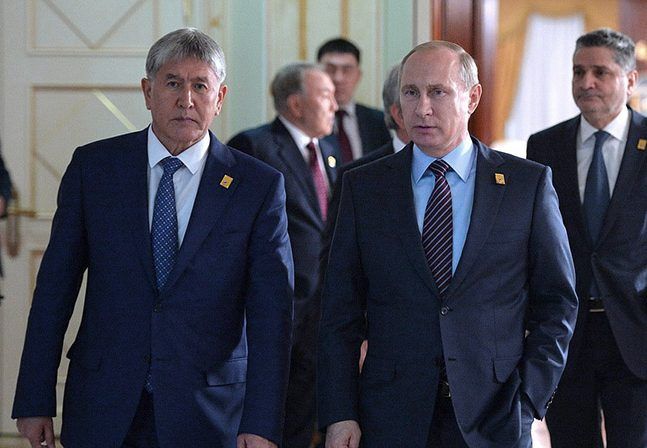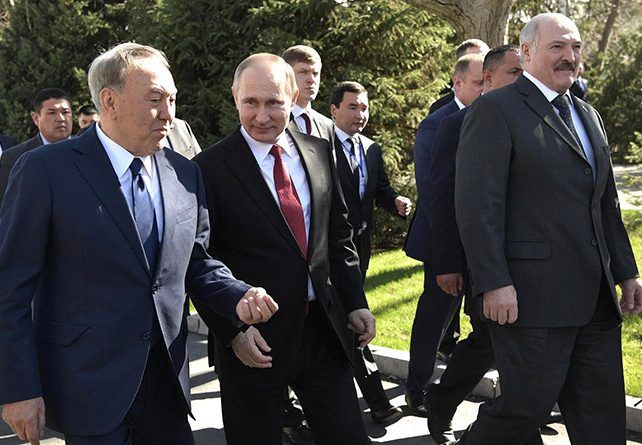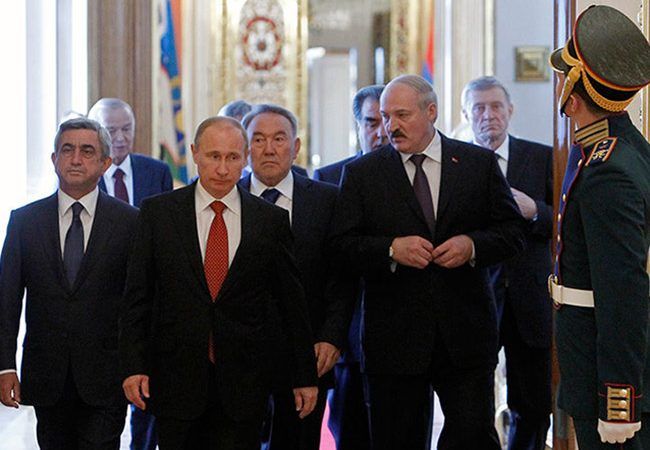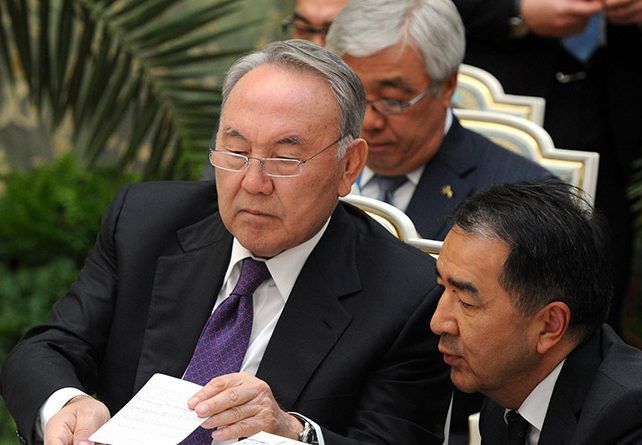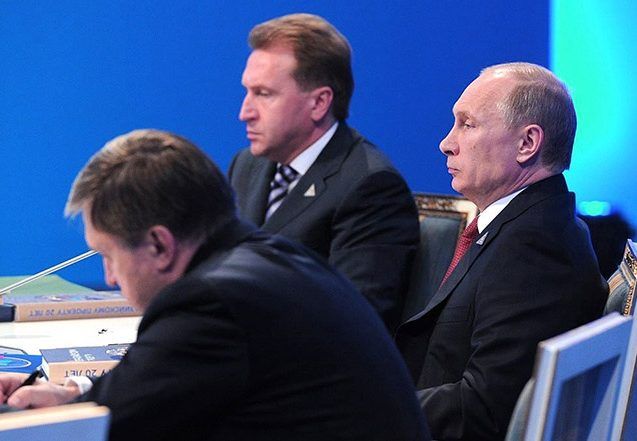In recent times, we regularly observe, how Eurasian economic union (EAEU) is shaken by scandals. Their numbers and content even allowed a number of authoritative international experts to make an assumption about a possible upcoming breakdown of this entity.
Yet another aggravagtion started at the end of last year, when the president of Balarus, Mr. Lukashenko demonstratively ignored summit of EAEU in St. Petersburg and took a long pause in signing of the new customs law (ratification of which will inevitably be accompanied by another “show off” by Belarus).
Kyrgyzstan’s president Atambaev also had an ambiguous take on the contents of customs law, refusing to sign it in full extent (even though it didn’t take long to convince him, a proof of which is a recently signed off Kyrgyz debt by Russia). We should also note that the departing Kyrgyz president became much more loyal, however still didn’t do anything to end a traffic of contraband Chinese goods from KR into EAEU.
During the inter-governmental Eurasian assembly that took place in Bishkek on March 7th, there was another scandal in regards to prices of Russian energy products for contrarious Belarus. Moreover, there was a need from Russian government to start to react, having grown tired from a flow of contraband Chinese products coming into the territories of EAEU. There is also a flow of sanctioned and other goods, from third countries, by rules differing from those accepted in EAEU. I.e. no matter who’s right and who’s wrong, the fundamental in EAEU principle of free movement of goods, was threatened.
And on April 4 in Bishkek, Kazakhstani president Nursultan Nazarbaev (most likely following orders from Brussels, with which Kazakhstan has recently signed “harmless for EAEU” new agreement on deeper partnership) essentially torpedoed receiving by Moldova (in regards to which EU has its plans) of status of watcher-state in Eurasian economic union. Thus, at the summit in Bishkek Moldova’s president’s petition to give his country the status of a watcher was only welcomed but wasn’t given to them; another proposal will be developed, which will undoubtedly take a long time.
Why does this happen? And what are the real prospects of unification? Can an aggressive political PR aimed at proving its sustainability, resolve existing problems, and which one of them is the main one? Below we offer our readers a subjective opinion on the situation of a Russian political expert, director of ANO CPT PolitKontakt, Andrey Medvedev.
In recent years we observe how an idea of globalization gradually transforms from efforts to create a unilateral model into an organic division of the world into large regional structures, which by gradually building relations, will eventually create a more realistic model of globalization. Thus, a development of regional unions today is one of the most important trends of development of the global economy. For example, 2/3 of international trade is done through the framework of regional trade agreements, number of which since the end of last century and until now has risen from 70 up to 280.
At the same time, in my opinion, the effort of American ruling elites, as representative of until recent times the only superpower, to create global economic structures aiming at controlling world markets, resource, its transportation and financial flows wasn’t successful; same goes for their efforts to preserve world financial system, based on the dollar.
However, it is worth noting that global economic structures through their representatives, incorporated into elites of national governments, still quite successfully prevent strengthening of potential geopolitical competitors of US. Nonetheless, they were unable to withhold competition from China, and we see how two of the most powerful economies of the world are trying to simultaneously advance their own megaprojects (such as Trans-pacific partnership, Trans-atlantic trade and investment partnership, silk road economic belt) and try to find common ground.
Regardless of how successful framing of agreements between two main economies of the world will be, region of central asia will remain as one of the territories of sensitive contact – each of the players will use the region as a foothold of moderation, and regardless of achieved compromises, will compete with each other for securing control over transportation of resources, especially energy products.
In essence, all 25 years after the destruction of a single Soviet state, states of central Asia continue to remain the territory of geopolitical competition, first of all, due to presence of natural resources and transit potential. Region has turned out to be and remain quite easily destabilized due to a number of known domestic and outside problems.
Under these conditions, for countries of the region, integration on a regional level could be the only means of achieving most preferable conditions for relations with the Western world and China, while not becoming divided between them into two competing camps.
Overall, it was obvious that in the republic of former central Asia and Kazakhstan, conviction of necessity of regional integration, in one way or another, was shared by all leaders of central Asian governments. In particular, first agreements of regional cooperation between countries of central Asia were made back in 1993, when Kazakhstan and Uzbekistan signed an agreement on measures of expanding of economic integration, and in January of 1994, two countries signed an agreement creating single economic space.
In April of the same year, Kyrgyzstan joined the agreement, after which there were efforts of creating coordinating organs, inter-governmental councils, secretariat EAP. In March of 1998, Tajikistan joined the indicated countries. After that, there was a decision to move the focus of the organization towards economic cooperation, and EAp was transformed into central-Asian economic community (CAEC) which then, in December of 2001 was reorganized into central Asian organization for cooperation (OCAC).
However, lack of readiness of elites to limit national sovereignties in favor of achieving common regional goals, didn’t allow for achieving of voluntary “small” integration. This was prevented, first of all by subjective factors, in particular competition for regional leadership and personal relations of presidents. It became evident, that integration was possible only within the framework of “large space” – such as EAEU.
The agreement on creating of EAEU was signed on October 10th 2000 in Astana and after ratification by all participants, officially became operational on May 30th 2001. By the end of 2003 it became evident that within the framework of Organization of central Asian cooperation, most key agreements were not realized, and in 2004 Russia joined the OCAC, after which, based on advice of Uzbekistani president (after Uzbekistan joining the EAEU) in 2005 there was a fusion of these two organizations.
Within EAEU, colossal work was done, however the opportunities of the organization weren’t fully realized. The reason for that is seemingly the fact that the membership in EAEU itself, without mutual compromises, automatically couldn’t lead to theoretically possible positive results. Moreover, Uzbekistan, has soon left that format.
It is customary to think that the most developed concept of Eurasian union, was put forward by Kazakh president Nazarbaev. However, it is worth mentioning that it was first voiced not on March 29 1994 in Moscow, in front of students of MGU, but rather in Britain two years earlier. And most importantly this idea was aimed at achieving not as much common interests of regional integration, as it was at realization of own national goals. In the process of regional integration, Kazakhstan wanted to take a position of an older brother in post-Soviet Central Asia, and only then to collectively build most favorable relations for themselves not only with Moscow but with Beijing and Washington.
The thing is the same intentions (becoming older brother in former Soviet central Asia) were had by Uzbekistan, which has common borders not only with all four Asian countries of post-Soviet space but also with Afghanistan. As a result, central Asia has piloted different forms of inter-governmental integration without Russia’s participation, but none of them have led to creation of any sustainable regional structure.
This short insight on trials of regional integration allows to say that despite the fact that Eurasian economic union (existing since Jan. 1 2015) – is a relatively new international union, its creation was preceded by twenty-year efforts of looking for a model for regional integration.
For Russia, EAEU was and still remains an objectively important project. Many experts, whose point of view I don’t support on all issues, think that purely due to economic reasons, Russia cannot normally exist without Belarus, Kazakhstan and Ukraine and that without EAEU its destined to fall apart.
I adhere to the opinion according to which EAEU for Russia was initially not an economic but rather a geopolitical project: Russia ended up between a strong America and rapidly growing China, even in terms of diminishing human resources, with USA being 2 as big and China 10. Thus, population was too small.
To preserve economic space that demands at least 300 mil. people. At the same time, efforts undertaken since the collapse of the Soviet superpower to become friends with the West weren’t successful and the sincerity of Russian-Chinese friendship has always remained questionable. Thus, EAEU for Russia truly became an effort to respond to a historical challenge; in my opinion that effort wasn’t realized.
Eurasian integration moves slowly and with much difficulty, which was mentioned in the beginning of this article. Today, new controversies are added to these difficulties. For example, Belarus quite consciously exports sanctioned European goods into Russia, and Kazakhstan doesn’t lag far behind, having become a channel of contraband from China. And while Russia deals with its relations with Belarus, Kazakhstan has faced the fact that a stream of Chinese goods had flooded into its territory from KR, which has become a full-fledged member of the EAEU.
Experts still argue whether politics or economics is the main priority of EAEU. But the all agree that project could’ve been realized more effectively, had it had a cultural component – so far it carries a mostly imitational character, and the humanitarian factor is paid attention as only a secondary principle.
At the same time, majority tries to not recognize the fact that together with the questions of economic integration EAEU solves the issues of providing security to its members, if one views security in a larger sense, including for example relations of member states of Eurasian integration with world leaders represented by USA and China, and for some by Uzbekistan.
Whatever the case, it is still believed that EAEU must have only an economic component, and for discussion of political, foreign policy and defense issues there are ODKB two-sided regulatory structure, CIS, Union state of Russia and Belarus. Thus, differences in political positions shouldn’t affect EAEU.
Why then, doesn’t it happen on practice? When answering this question of course we can talk of the quality of elites within member-states of Eurasian integration. The illnesses are mostly the same: crisis of ideology and of the system of government management. In all states, without exception there exist (lets call them that) sectoral and territorial feudal lords, who are first of all worried not about issues of development of their own patrimonies but about keeping their control over them. Even though, at the level of first-faces of the government there is a correct, uniting Eurasian rhetoric, on the level of implementers anti-unionist and unfriendly actions take place, determined not by the national interests, but by interests of oligarchical groups, close to the political establishment i.e. interests of offshore diplomacy. In all of our states there are based on tribal relations, business clans surrounding the ruling powers.
All of this is true, but in my opinion, is that there needs to be a violation of the main principle of project activity, which works both on the level of separate NGO (for example ours) as well as on the level of regional integration: “if there is a break in connection between the developer of the Project and its realization, nothing can come out of such project besides an imitation”. The concept of a Customs Union, the foundation for which, among other things was the ideology of justice, was prepared by one group of people, but realization of EAEU was dome by a different group. For them, the first priority is normalizing of relations with USA, and Eurasian integration is possibly, just means of selling themselves in the west.
FROM EDITING TEAM. We remind our readers that article is a subjective opinion on the issues of integration in central Asian region. We invite those who don’t agree with authors opinion for discussion.

